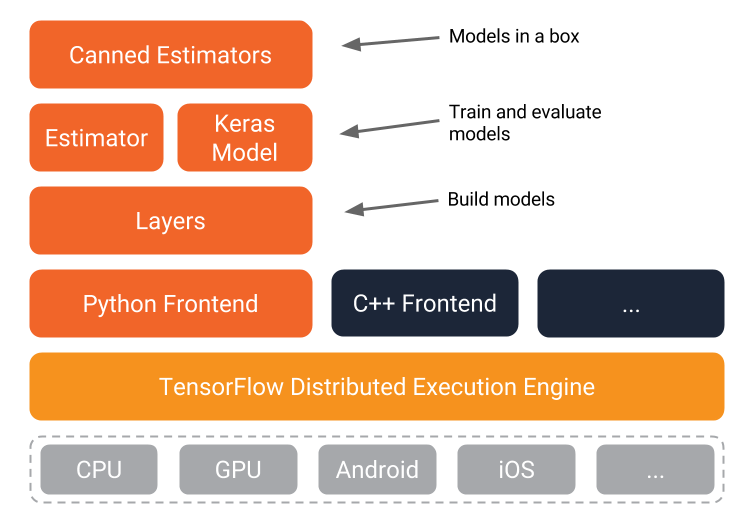TensorFlow is an open source software library for numerical computation using data-flow graphs. It was originally developed by the Google Brain Team within Google’s Machine Intelligence research organization for machine learning and deep neural networks research, but the system is general enough to be applicable in a wide variety of other domains as well. It reached version 1.0 in February 2017, and has continued rapid development, with 21,000+ commits thus far, many from outside contributors. This article introduces TensorFlow, its open source community and ecosystem, and highlights some interesting TensorFlow open sourced models.

The TensorFlow distributed execution engine abstracts away the many supported devices and provides a high performance-core implemented in C++ for the TensorFlow platform.
On top of that sit the Python and C++ frontends (with more to come). The Layers API provides a simpler interface for commonly used layers in deep learning models. On top of that sit higher-level APIs, including Keras (more on the Keras.io site) and the Estimator API, which makes training and evaluating distributed models easier.
And finally, a number of commonly used models are ready to use out of the box, with more to come.
TensorFlow execution model
Graphs
Machine learning can get complex quickly, and deep learning models can become large. For many model graphs, you need distributed training to be able to iterate within a reasonable time frame. And, you’ll typically want the models you develop to deploy to multiple platforms.
With the current version of TensorFlow, you write code to build a computation graph, then execute it. The graph is a data structure that fully describes the computation you want to perform. This has lots of advantages:
It’s portable, as the graph can be executed immediately or saved to use later, and it can run on multiple platforms: CPUs, GPUs, TPUs, mobile, embedded. Also, it can be deployed to production without having to depend on any of the code that built the graph, only the runtime necessary to execute it.
It’s transformable and optimizable, as the graph can be transformed to produce a more optimal version for a given platform. Also, memory or compute optimizations can be performed and trade-offs made between them. This is useful, for example, in supporting faster mobile inference after training on larger machines.
Support for distributed execution
TensorFlow’s high-level APIs, in conjunction with computation graphs, enable a rich and flexible development environment and powerful production capabilities in the same framework.